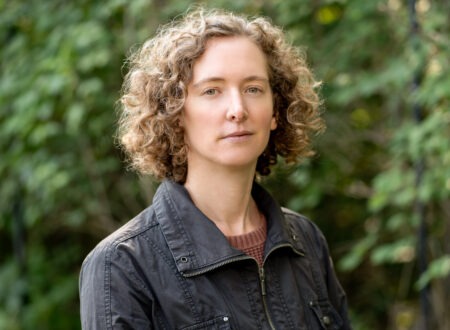Last Friday, Prime Minister Stephen Harper announced new funding for First Nations education. He also announced changes to the proposed First Nations Education Act, which would be re-named the First Nations Control of First Nations Education Act (a few bullet points on these amendments were made available). Since a new draft bill has not been released yet, this blog focuses only on the financial side. You can check out my earlier blog for a memo on the draft Act released in October.
The press conference focused on a big number: $1.9 billion in education funding. But what do the new numbers really mean? This post looks at each part of the funding announcement and goes behind the numbers.
The new funding will surely be an improvement. But is it enough? As it turns out, there’s less money here than it seems. The new education legislation will require First Nations to take on massive new responsibilities, but the resources to meet those responsibilities are insufficient. The new funding will not close the gap between education for First Nations kids and for other Canadian children. It also looks likely to put First Nations kids increasingly farther behind over time. Wholesale changes to the funding approach itself and adequate funding levels are clearly necessary to address the huge gaps in education infrastructure and services for First Nations children. Unfortunately, the announced funding does not seem to go nearly far enough.
(1) School Infrastructure: “$500M over seven years, beginning in 2015-16”
Spreading out a number over many years is a great way to make it sound big. Let’s start with basic division: $500 million over 7 years is about $71.4 million a year.
Currently, Canada says that its education infrastructure spending is about $200 million per year. This includes capital construction, as well as operation and maintenance for school buildings. I’ll assume that $71.4 million would add on to that amount, making the total $271.4 million per year, starting next year.
How much is needed? A few years ago, the Parliamentary Budget Office ran some models using fiscally conservative assumptions. They found that First Nations’ existing schools needed $287-308 million per year in capital construction spending, plus another $110 million for operations and maintenance – i.e. about $410 million a year as of 2009-10.
That does not include the need for new schools, because the PBO did not have enough information to assess that issue. Many First Nations lack schools. Some kids are bused out, and for many remote communities children have to leave home and live far away in order to get a basic K-12 education.
By 2015-16 (six years after the PBO estimate), Canada is saying there will be something like $271.4 million a year for schools. This is a long way off from $410 million, plus inflation since the PBO estimate, plus catch-up costs (from deterioration since the PBO estimate), plus room for new schools. So it looks like while things will improve a bit, we’re still far from where we need to be.
(2) Growth: The 2% cap on annual increases is replaced by a 4.5% “escalator”
One might think that keeping pace with population growth and inflation would be covered without question. But it’s not. In First Nations education funding, these increases will have been capped at 2% for 20 years. In practice, experts say this means that in real terms First Nations education funding has actually been declining by 3-4% per year since 1996.
Statistics Canada tells us that First Nations populations are young and growing fast. Add inflation, and an AFN report found that at least 6.3% per year is required to keep pace with these unavoidable realities.
Canada’s recent announcement said that the 2% cap would be replaced by a new 4.5% “escalator” starting in 2016-17. But if 4.5% operates as a new cap, it could still be some distance behind the real life growth of 6.3% (or more). That means funding levels would continue to fall farther and farther behind over time.
(3) Core Funding K-12: “1.25B over three years, beginning in 2016-17”
This $1.25 billion for core funding was the biggest figure in the announcement. $1.25 billion over 3 years is about $416.7 million per year. The federal government says that funding for First Nations education is now about $1.55 billion a year. Let’s assume this $416.7 million is new funding. If so, it would get added to the existing amount – but not for another two years, i.e. after the next federal election.
Currently, First Nations education is a long way off from comparable provincial service levels, let alone where it needs to be to close the still-widening gap in high school graduation rates (which the Auditor General said will take over 28 years to close as of 2011).
Many people have detailed dozens of serious service gaps experienced by First Nations students as compared with other Canadian school children. Canada’s own National Panel on First Nations Education “saw evidence of significant gaps in compensation of teachers and principals, a lack of equipment and supplies in libraries, shops, gymnasiums and technology, inadequate supports for special needs students, school facilities in disrepair or in portable units, and many other indications of gaps in funding” (p. 39). Pages 16-17 of their report provide more details on “some of the more startling gaps” they saw.
Even Canada’s own performance evaluation of First Nations’ education recognizes that First Nations kids are getting left far behind. In classic bureaucrat-speak, they put it this way: “The intended outcome of education opportunities and results that are comparable to the Canadian population is not being achieved.” (p. 2)
What’s the price tag to bring the system up to par? Unfortunately, I have not seen a public document that puts an exact number on that gap nation-wide. The National Panel said quantifying the “magnitude of underfunding” was beyond their mandate.
Reaching that number is more complicated than simply comparing average spending per student in a province to average federal funding per student. Many reports have shown that federal spending for on-reserve schools is significantly lower than provincial spending on public schools, dollar for dollar (here’s one, two, three such reports if you’re interested). Comparisons can get tricky: for instance, journalists have accused Aboriginal Affairs of inflating its published averages by including provincial schools, which are often paid more to educate a First Nations’ child than would be available if the child attended a school on reserve. Comparisons will also be weak if they fail to take into account that a First Nations student in a remote community is not your “average” provincial student, as this paper from Queens’ University discusses. Bring in the key factors – things like language programs, small schools, remote areas, socio-economic factors, and special needs – and the funding gap widens farther and farther (check out pages 44-46 of this report for some vivid examples).
One gap that should be beyond question is the need to keep pace with increases in inflation and student population. As mentioned, however, First Nations’ core education funding has been capped at 2% per year for two decades, while the First Nations’ population grew 29%. A previous report from the Assembly of First Nations said that the annual shortfall from that gap alone was $747 million per year as of 2010-11 (and it would be more by now, four years later). Cumulatively, they put the annual growth gap at over $3 billion by 2010-11.
So, just looking at that one factor alone – and there are many others – another $400 million a year as of 2016-17 looks like an improvement, but a very long way off from equitable funding. It would not even cover past population growth.
How could we identify and close the full, much bigger, gap? What the National Panel recommended was that Canada not just increase funding, but develop an entirely new formula that is attuned to the actual needs of First Nations students and communities. Friday’s announcement did not appear to signal such wholesale changes to the funding approach itself.
(4) Implementation Funding: “$160M over four years, beginning in 2015-16”
The new education legislation will require First Nations to take on massive new responsibilities. In most cases, these responsibilities were not taken on by anyone before. First Nations will be required to fulfil many requirements that a school board or Ministry of Education would fulfil in a provincial system, prepare new plans and reports, and meet many new standards.
While there are issues with the Act (and the latest draft is not available yet), there is no question that broadly speaking these sorts of responsibilities are essential. Many have commented on the utter lack of any real “system” in most First Nations education. Sending schools off to operate on their own is like sending troops off to battle without any support from headquarters. Coordination, training, monitoring, specialized services – these “back end” supports are key to success. Someone needs to take on those responsibilities.
Surely, that someone should be First Nations themselves, who have been seeking control of their own education since at least the 1970s. But passing off responsibility without adequate resources is a set up for failure. Is the implementation funding going to be enough?
Implementation funding of $160 million over 4 years is $40 million a year. That comes to about $63,000 for each First Nation. Suddenly, it doesn’t sound so impressive. So while setting responsibilities is one thing, actually meeting them will be another.
Conclusion
Some say numbers don’t lie. But without context, they can certainly give the wrong impression.
More funding is good, but it needs to be put into perspective. All of us need to be asking hard questions, and none of us should be satisfied until the kids are getting not just a bit more, but what they truly need and deserve. Probably First Nations student Shannen Koostachin put that best: First Nations kids have the right to safe and comfy schools where they receive a quality education that makes them proud of who are they are and prepares them to achieve their dreams.
By Judith Rae
Related Posts

Five Years of C-92: Progress Made and the Road Ahead for Indigenous Jurisdiction in Child and Family Services
Tuesday, April 22, 2025
An Act respecting First Nations, Inuit and Métis children, youth and families came into force over five years ago on January 1, 2020. It is frequently…
Read More...
OKT Podcast - Overview of the Reference on Bill C-92
Tuesday, February 20, 2024
We are excited to introduce the inaugural episode of the OKT podcast!
In this debut installment, Jesse Abell, Krista Nerland, and Judith Rae discuss the intricacies…
Read More...
First Nations: Did some of your members go to residential school?
UPDATED DEADLINE: JUNE 30, 2022
First Nations: Did some of your members go to residential school?
If yes, there is a class action underway now that may apply to you,…
Read More...

